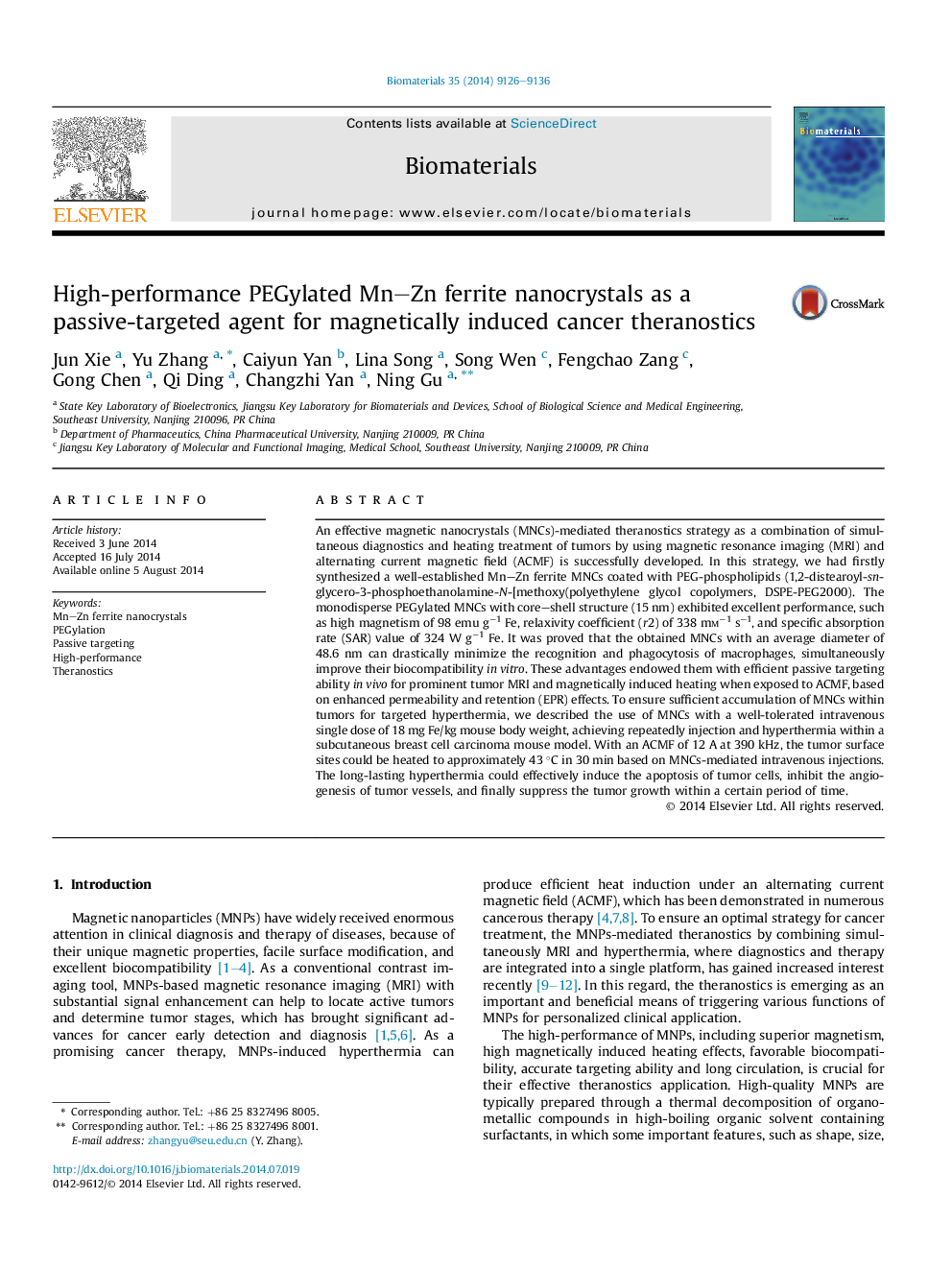| کد مقاله | کد نشریه | سال انتشار | مقاله انگلیسی | نسخه تمام متن |
|---|---|---|---|---|
| 5810 | 437 | 2014 | 11 صفحه PDF | دانلود رایگان |

An effective magnetic nanocrystals (MNCs)-mediated theranostics strategy as a combination of simultaneous diagnostics and heating treatment of tumors by using magnetic resonance imaging (MRI) and alternating current magnetic field (ACMF) is successfully developed. In this strategy, we had firstly synthesized a well-established Mn–Zn ferrite MNCs coated with PEG-phospholipids (1,2-distearoyl-sn-glycero-3-phosphoethanolamine-N-[methoxy(polyethylene glycol copolymers, DSPE-PEG2000). The monodisperse PEGylated MNCs with core–shell structure (15 nm) exhibited excellent performance, such as high magnetism of 98 emu g−1 Fe, relaxivity coefficient (r2) of 338 mm−1 s−1, and specific absorption rate (SAR) value of 324 W g−1 Fe. It was proved that the obtained MNCs with an average diameter of 48.6 nm can drastically minimize the recognition and phagocytosis of macrophages, simultaneously improve their biocompatibility in vitro. These advantages endowed them with efficient passive targeting ability in vivo for prominent tumor MRI and magnetically induced heating when exposed to ACMF, based on enhanced permeability and retention (EPR) effects. To ensure sufficient accumulation of MNCs within tumors for targeted hyperthermia, we described the use of MNCs with a well-tolerated intravenous single dose of 18 mg Fe/kg mouse body weight, achieving repeatedly injection and hyperthermia within a subcutaneous breast cell carcinoma mouse model. With an ACMF of 12 A at 390 kHz, the tumor surface sites could be heated to approximately 43 °C in 30 min based on MNCs-mediated intravenous injections. The long-lasting hyperthermia could effectively induce the apoptosis of tumor cells, inhibit the angiogenesis of tumor vessels, and finally suppress the tumor growth within a certain period of time.
Journal: Biomaterials - Volume 35, Issue 33, November 2014, Pages 9126–9136